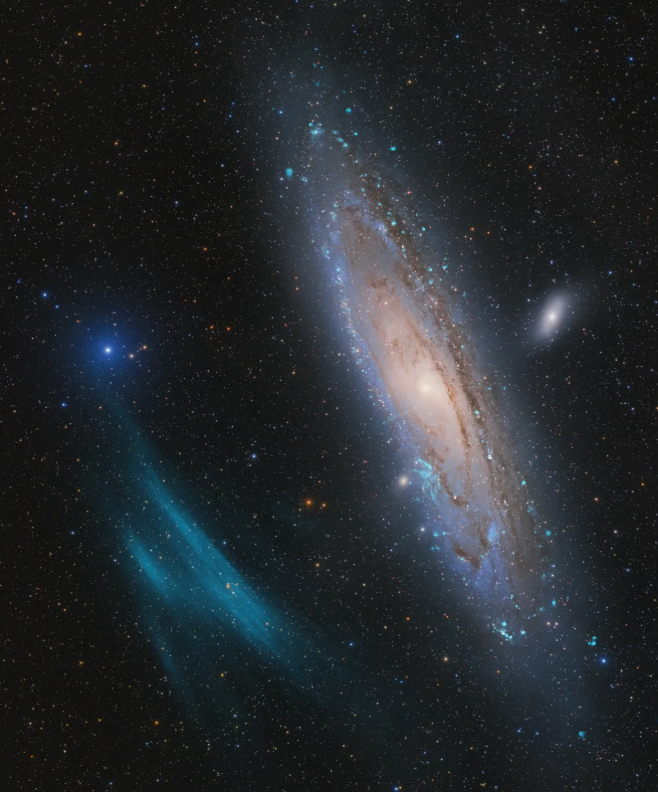#64 I++
Ryland learns from Stratt in 05.251 that stars other than our sun are growing dimmer (in a future beanbag, we will explore facts about all the stars mentioned here). Stratt then explains that the luminosity readings were entirely generated by amateur astronomers, though she does also have professional astronomers working for her.
Amateur astronomers have been responsible for a number of significant discoveries about our universe. It’s worth noting that the word “amateur” in this context does not indicate any lack of expertise, but rather a lack of professional employment in the field (in other words, “someone who carries out astronomy with a high degree of skill, but not for pay”).
Here we will highlight just a few of our favourite results from amateur astronomers over the years:
Our neighboring large spiral galaxy, the Andromeda Galaxy (M31), has intrigued both astronomers and keen-eyed observers under dark skies for centuries. While it has been the target of much professional astronomy in the 20th and 21st centuries, it was a group of amateurs in 2022 who discovered a never-before-seen oxygen-rich nebula just outside M31. This gigantic arc of ionized oxygen gas (plasma) may be suggestive of interesting interactions between our own Milky Way and neighboring Andromeda; research to better understand this object is still ongoing.
One of the three astronomers behind the image, entitled Andromeda, Unexpected, said, “We amateur astronomers can capture what Hubble and the James Webb Space Telescope can’t because they only capture a teeny tiny fraction of the sky”.

Andromeda, Unexpected © Marcel Drechsler, Xavier Strottner and Yann Sainty
Closer to home than M31’s distance of 2.5 million light-years, amateur astronomers have discovered numerous comets and asteroids. The long-period sungrazing Comet Lovejoy which made a splash with the public as the “Great Comet of 2011”, was discovered by Australian amateur astronomer Terry Lovejoy who has discovered other comets which now also bear his name. The second interstellar object (and first interstellar comet) to be ever be discovered within our own solar system system, 2I/Borisov, was discovered by Crimean amateur astronomer Gennadiy Borisov.
Finally, let’s talk about exoplanets. Amateur astronomers using relatively inexpensive equipment have supported in the detection of planets around other stars, including Jupiter-sized planet XO-1b. Citizen scientists even discovered a planetary system around the star K2-138 using data made available on Zooniverse, thus demonstrating that the excitement of astronomical discovery can be open to all with a computer and internet access.
These are readings from amateur astronomers all over the world. They show something very important.
05.246